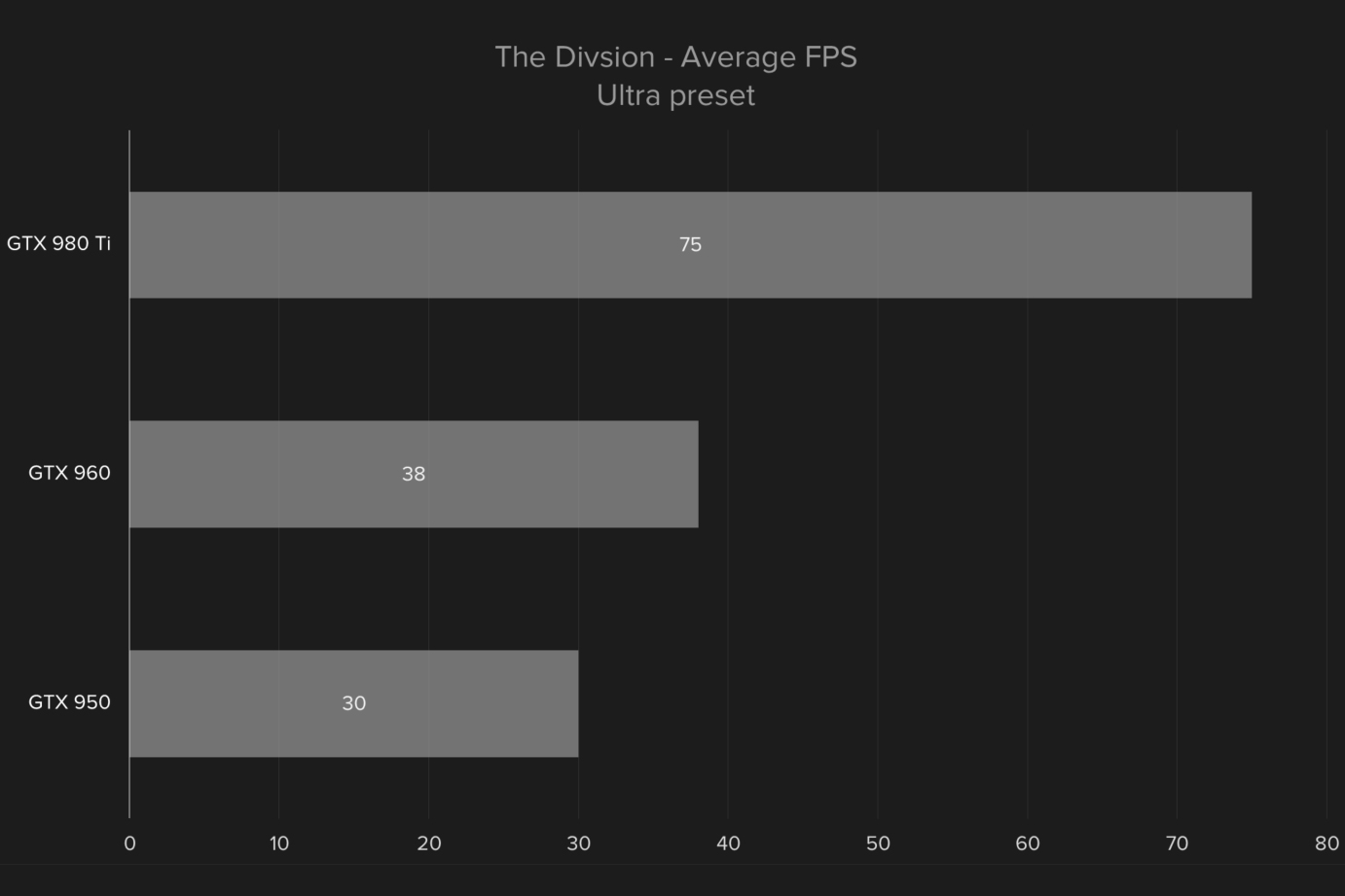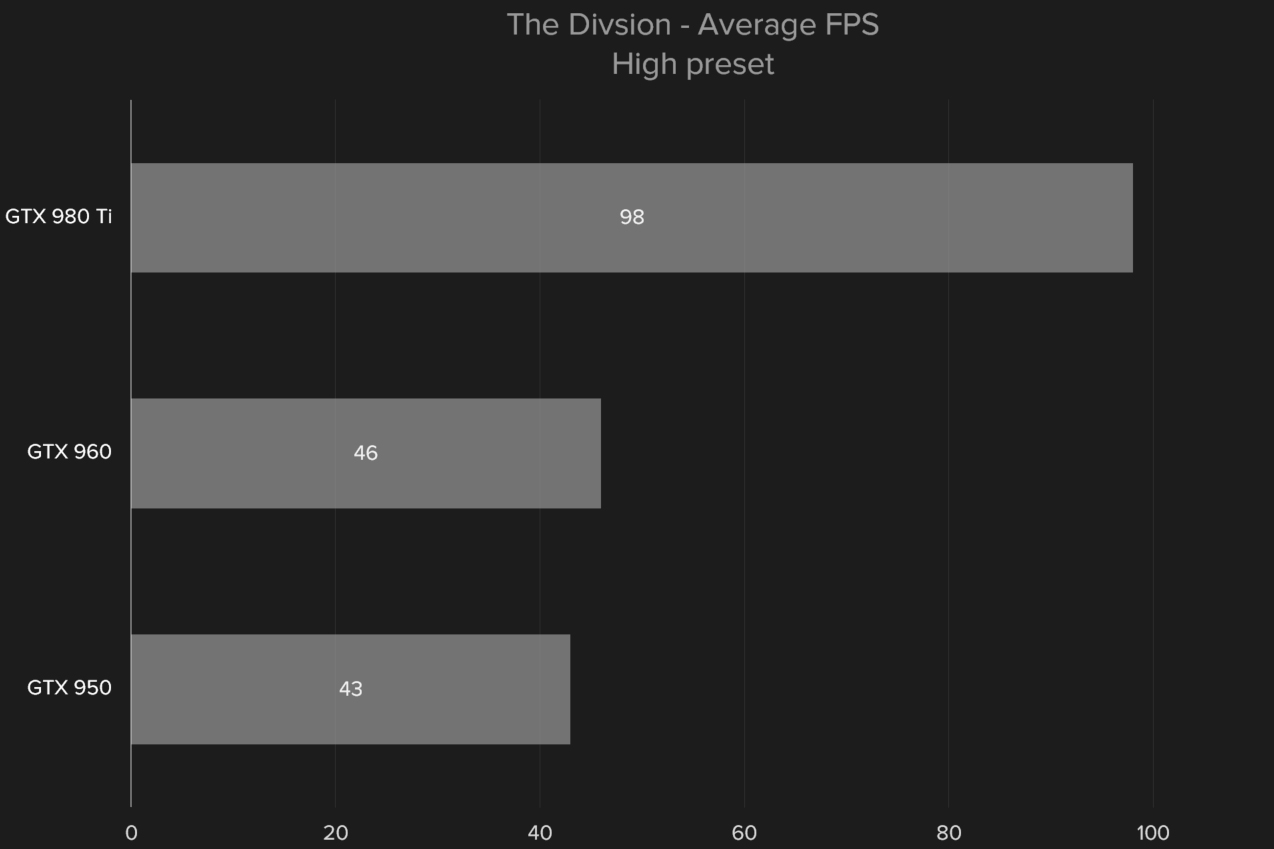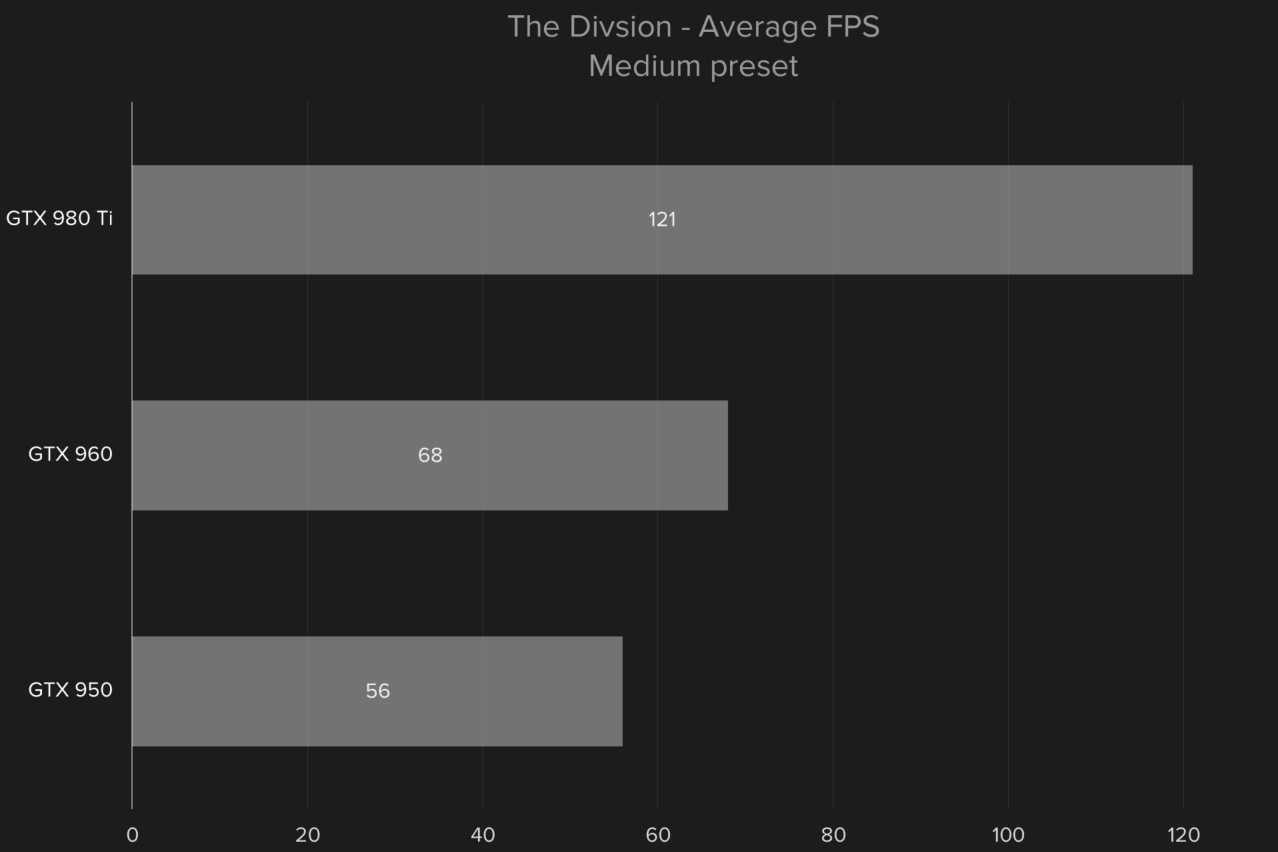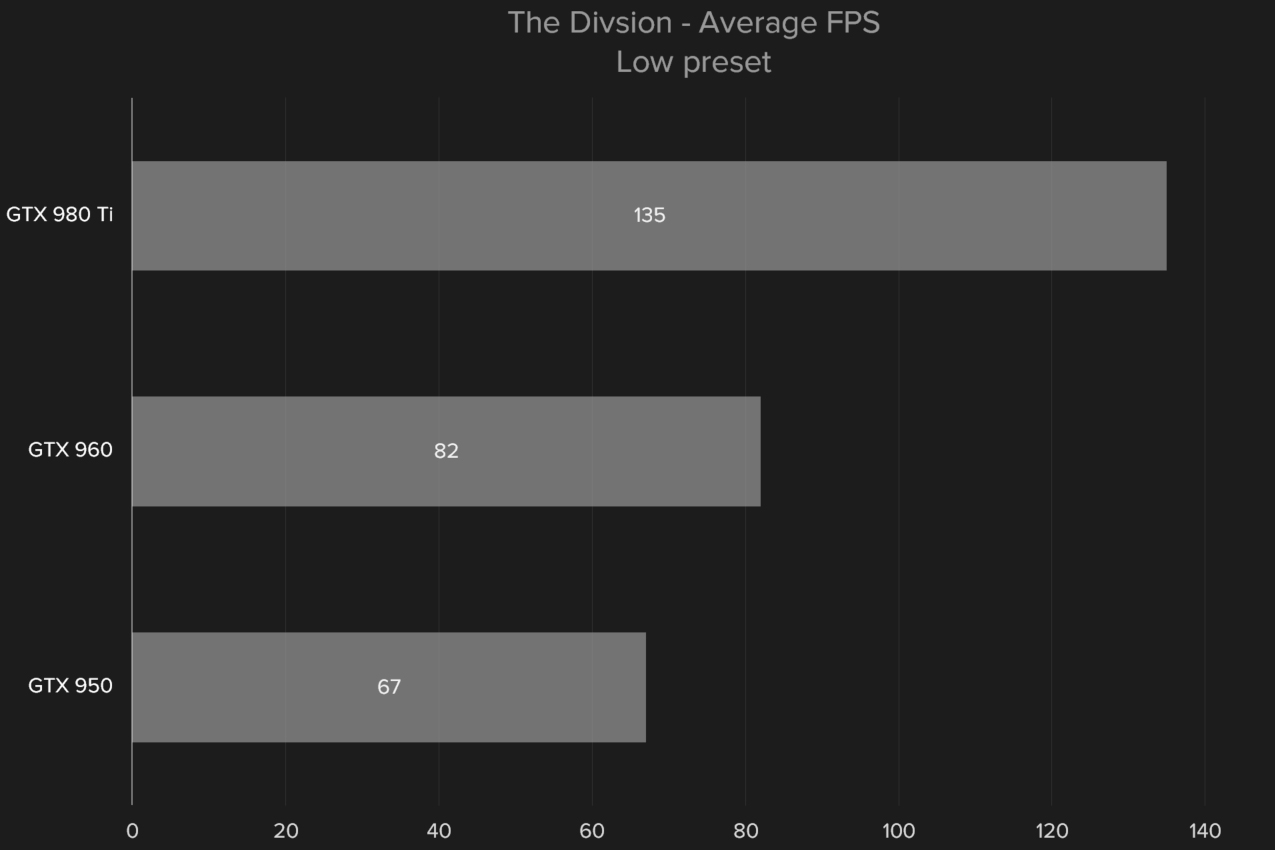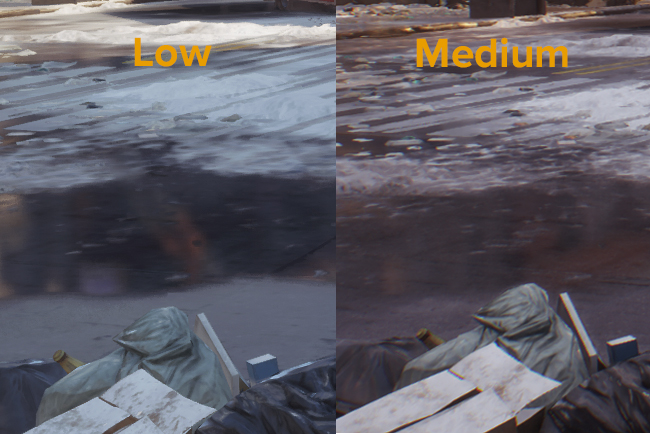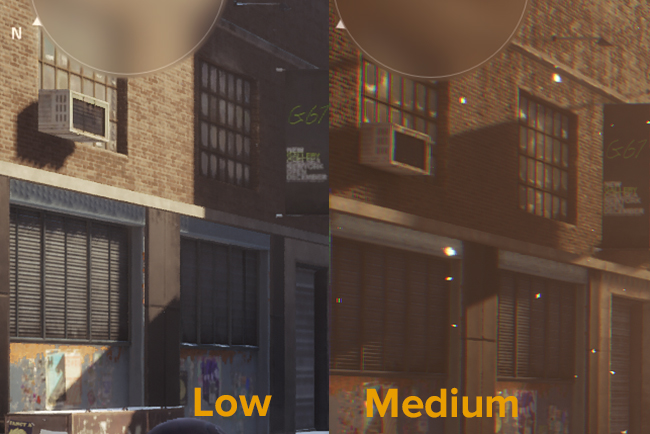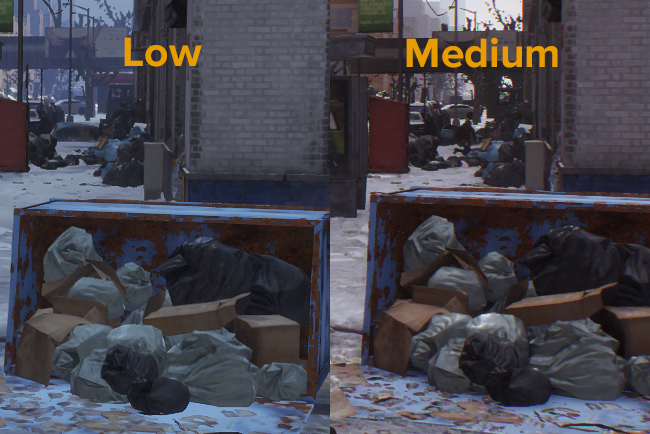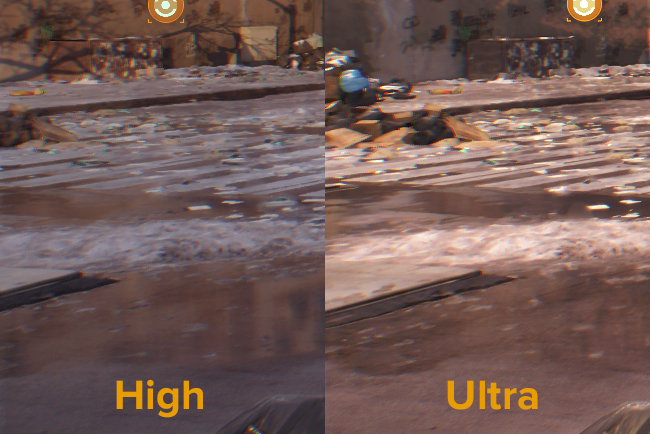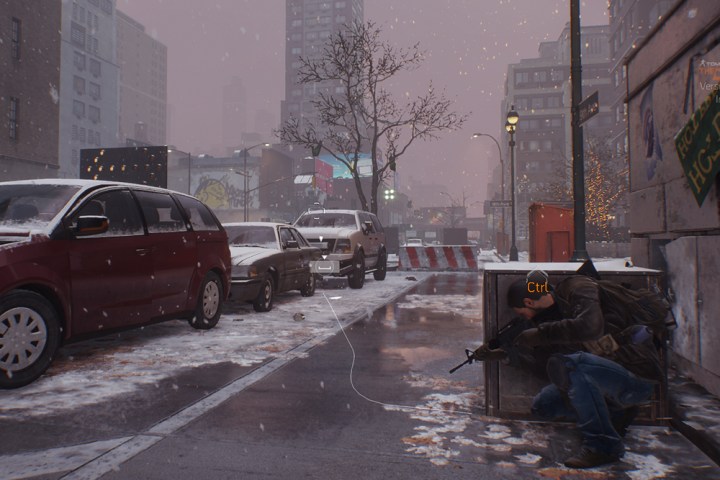
With that uncertainty in mind, we’ve spent a few minutes rounding up the results on our test system, with a few different GPUs installed to see exactly how well it runs. Before we dig into the results, it’s worth pointing out some qualifications, as well as some quirks we experienced while running our tests.
Take note
The Division is still in open beta, at least as we tested it. Future changes might improve performance, or change the impact of different performance presets. However, since the game was put out as an open beta, it seems doubtful that major optimizations will be included. The title is nearing its release.
It’s also worth noting that the game, at least in its current state, prefers V-Sync on. It’s turned on in all of the presets, even low, and there’s an option to use framerate limiting as well. We’ve turned both off in order to see just how high the framerates reach without the rounding and limits imposed by V-Sync, which attempts to maintain an even 60 frames per second.
The Division has four graphical presets in its current form: low, medium, high, and ultra. At 35 percent of reported screens in the Steam Hardware Survey, 1080p is the most common resolution by a decent margin, so that’s where we’ll be testing. We also tend to consider an average framerate of 60 to be the goal for most gamers, so that’s what we hope to see in the following benchmarks.
Our test rig has an Intel Core i7-6700K processor, at its stock speed, with an Asus Z170 Deluxe gaming motherboard. It’s paired up with 8GB of RAM, and a 2.5-inch solid state drive. We’ve selected the GTX 950, GTX 960, and GTX 980 Ti as our test graphics cards. While we would’ve liked to test AMD, we had limited time available, and decided on these cards due to their high popularity in Steam’s hardware survey.
Brass tacks
As it turns out, The Division is a tough game for rigs to run. It’s more challenging than Battlefield 4, at least in our testing. That means the low preset is a bit of a misnomer – the GTX 950 can barely hold over 60 FPS.
Jumping from low detail to medium reduced performance by 12 frames per seconds, or about fourteen percent across the board. The teetering 950 drops below 60 here, albeit just barely, and the 960 clears the 60FPS hurdle by a slimmer margin.
Moving from medium to high is the trickiest, costing our test system an average of 20 FPS (25 percent). The 950 and 960 are almost even, while the 980 Ti sets itself apart, dropping just below 100 FPS.
Ultra detail forces our cards to drop an average of 15 FPS, or 13 percent, relative to high. Only the GTX 980 Ti can handle the game at ultra. It pumps out an average of 75 FPS, and importantly, never drops below 62 in our testing. That should be more than enough headroom for gamers to achieve a solid 60 FPS at 1080p resolution, even when cars start exploding and hooded bandits open fire.
The good news is that the GTX 950 is still able to hold at 30 FPS in ultra, the same framerate promised by consoles at 1080p.
Aesthetics
It can’t all be numbers and framerates, though. Graphical fidelity affects your enjoyment of the game, so we snapped a few screenshots to help understand exactly how each preset effects the visual fidelity.
Upgrading to medium from low is a decent performance jump, and provides a massive visual boost. Shadows aren’t cast by just the largest buildings and objects, anymore. Reflections off the frozen streets take on a fuzziness, rather than just mirroring what’s across the way. Importantly, textures are noticeably improved, to the point that low starts to look cartoonish in comparison.
With the larger graphical elements now enabled, the high setting develops the finer details. Especially at a distance, windows and banners walls start to look even more real, thanks to dirt and grime buildup. Add in some more advanced lighting and greater draw distance, and you start to feel like you could hop in a taxi and visit any of the buildings on the horizon. There’s also an environment effect that softens the background, providing a more realistic look than medium, which suffers from overly harsh lighting.

The major difference between high and ultra is the snow, both in terms of quantity and fidelity. It’s not just the snow that’s falling, but the piles of it that accumulate on the sidewalks. The edges are rougher, like real snow, and patches appear separate from whatever detritus they cover on the ground.
Other than that, most the change in graphical quality comes from better anti-aliasing, higher texture quality, and post FX effects. Those changes result in an improved sense of realism across the board. Jackets and backpacks have seams and move naturally, and edges on cars and objects are much cleaner.
To improve performance, reduce fog
While performance is going to vary based on a number of factors outside of GPU, our tests offer up a decent idea of the ideal settings for each setup. For most systems, the golden 60 FPS target is going to mean starting at the medium or high detail preset. From there, we found a few customizations that have a big impact on framerates.
Wind-affected snow and volumetric fog are heavily utilized in the frosty New York streets, and disabling either or both is a quick way to smooth out a system that’s not quite running at high. These effects appear to be the most demanding single settings in the game. Apart from that, it’s the usual suspects; turning down shadows or anti-aliasing can net you a few frames per second. Most other settings barely budge the framerate on their own, so you’ll have to mess with a lot dials to fine-tune your experience.
Keeping context
The Division was built with a PC experience in mind, rather than console first, as it’s been accused of. It’s clearly a more demanding game on computers than it is on either console. The PS4 and Xbox One versions of the game aren’t as attractive, yet the game uses a 30 FPS performance target, rather than the smoother 60 FPS enjoyed by PC gamers.
Ubisoft also shows a commitment to the world of PC gaming with a wealth of graphical options for individual tweaking, and presets that make a noticeable difference in the performance of the game. Prioritizing big changes at the low end, and minor details at the high end, means more systems can run it, and enthusiasts will feel like they’re getting the most from their rig.
The Division for PC definitely looks superior to the consoles, and enjoys a wealth of graphical tweaks.
Whether that results in an attractive game is another question on its own. Building an engine from the ground up, as Ubisoft has done with the Snowdrop engine, is no easy feat. There’s be some controversy over the difference between how The Division looked at its announcement, and how it looks in the beta. While we’re not sure it’s fair to demand a game live up to its earliest gameplay snippets, we do think The Division looks a bit lackluster if compared to Battlefield 4, a game that is a bit less demanding of hardware.
Still, the weather effects and detailed world building are still sure to win at least some gamers over, and The Division for PC definitely looks superior to the consoles. Hopefully, Ubisoft can squeeze in a few additional tweaks to ramp up performance and image quality before release.
Editors' Recommendations
- Horizon Forbidden West is a marvel — if your PC can handle the heat
- The surprising reason your powerful PC still can’t handle the latest games
- This new PC watercooler covers both your CPU and SSD
- You can now update your PS5 controller on PC. Here’s how
- Gigabyte unveils new mini PC — can it rival the Mac Studio?
